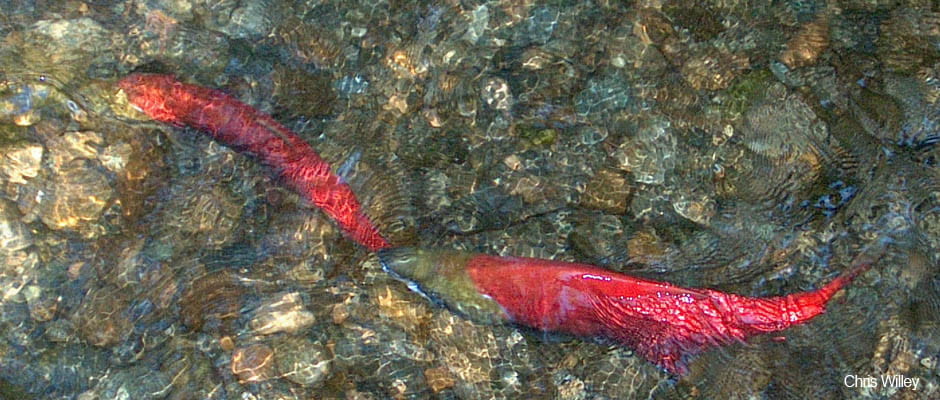From Conservation Magazine, a nice little article on our recent paper in Conservation Letters calling for a small number of fully protected salmon runs.
Ask not what a park can do for spawning salmon. Ask what robust salmon runs could do for the park – and for coastal fishing communities.
That’s the provocative idea behind a “radical” proposal being floated by a group of conservation biologists. Limiting fishing for some pink and chum salmon bound for spawning streams in British Columbia parks could reinvigorate ecosystems that thrive on the annual infusion of millions of fish carcasses. And, in the long run, protecting the runs could produce economic benefits by making ecosystems more productive and resilient to change.
“Although managers safeguard protected areas for migratory species, little consideration has been given to how migratory species might benefit parks,” a team led by Chris Darimont of the University of California, Santa Cruz, and the Raincoast Conservation Foundation in Canada write in Conservation Letters. Case in point: Headwaters streams in coastal parks in British Columbia once saw huge annual runs of Pacific salmon. Many of the spawned-out fish died, producing a “fertilizer effect” that pumped a vast pulse of nutrients into surrounding ecosystems. “The breakdown of salmon carcasses… ultimately can affect communities of riparian plants, terrestrial and freshwater invertebrates, resident fish, and songbirds,” the authors note. These days, however, commercial and recreational fishers kill up to 90% of the fish before they can spawn, blocking the transfer of nutrients.
To restore at least part of that pulse, the authors propose limiting catches of pink and chum salmon(Oncorhynchus gorbuscha and keta), which have still have large runs but low commercial value. While Chinook salmon sold for $1.23 a pound in 2002, for instance, pink and chum sold for just 6 to 16 cents a pound. “We believe that a focus on pink and chum… provides opportunity to implement our ideas without severe economic consequences.”
The authors concede that “some might deem our idea politically unachievable,” but add that their “aim is to inform and inspire decision-makers with a plan that not only favors biodiversity but also one that ultimately might yield economic and management benefits. Our goal is to inoculate the literature with a provocative idea to stimulate discussion.”

